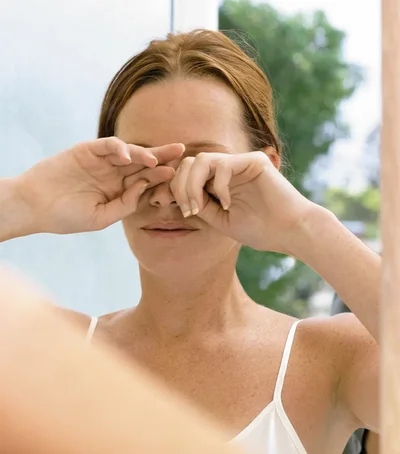
If you suffer from migraines, you cannot control all the causes that lead to headaches, but depending on them, you can practice those yoga positions that reduce the frequency and intensity of the pain.
The short yoga asana session below applies to migraines caused by hormonal changes or muscle tension. Like yoga, magnesium and vitamin B2 (riboflavin) have been found to reduce migraine frequencies by approximately 50% in people who have a few attacks per month. This session can be helpful for hormonal migraines, fatigue, insomnia, or hormonal disturbances caused by the gynecological condition called endometriosis.
Start with a light warm-up session such as six spine movements, sun salutations, or light moons. Place cubes, or mats or blankets for all the positions so you can do them effortlessly.

From the raised position:
Uttanasana – (Forward Bend Pose) Take 3-5 breaths in that position. Inhale when you stand up X 2. This posture relieves migraines because it releases tension from the head, neck and shoulders.
Vrikshasana – (Tree Pose) Hold for 4-5 breaths, lower your leg while exhaling and repeat on the other side. This posture helps to open the front of the body, create space for breathing and prepares the body for Prasarita Padottanasana.
Prasarita Padottanasana (Forward bend with open legs) – 3-5 breaths. Exhale when you stand up. X 2. One of the most feasible and easy bends, it manages to release neck tension and helps to bring oxygen to the brain.
From a sitting position:
Paschimottanasana (Seated Forward Bend) from Dandasana Pose – Stay like this for 3-5 breaths, inhale as you come up and exhale to go to the seat. This position stretches the muscles and releases tension from the back as you breathe deeply with your entire chest.
Janu Sirsasana (head to toe sitting position) – 3-5 breaths. Breathe in as you stand up, exhale to relax, and come back to the other side. This position, gently massaging the internal organs, is very good if you suspect that the migraine is the result of a hormonal disorder.
Baddha Konasana (Bend-Ankle Pose) – Hold that position for 3-5 breaths, then lie on your back, keeping your feet together and perhaps placing a folded towel behind to stretch your back on top for Supta Baddha Konasana . Stay in this position for at least 10 breaths, it helps calm the nervous system.
Supta Virasana (lying position) – 10 breaths. This helps to release tension built up around the heart and lungs and improves blood circulation to all parts of the body. Before coming out of this pose completely, move forward into Child's Pose on a pile of blankets for 10 breaths to ease and calm your mind.
Viparita Karani (Position with legs up the wall) – 10 breaths. An eye-shaped pillow or a folded blanket under the head are very good aids for this posture, especially during a headache. This posture helps to calm nervous tension and helps the circulation of blood and hormones throughout the body.
Halansana from the position of feet on the wall - Stay like this for 10 breaths. Use a blanket folded under your shoulders to create space for your neck. Lowering the chin (Jalandhara Bandha) in this position helps to facilitate circulation and the respiratory system and release tension from the upper body.
Finish with Nadi Shodana – alternate nasal breathing and then take 5 minutes to relax, either lying in the Savasana position or in a reclined resting position.





